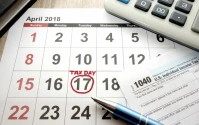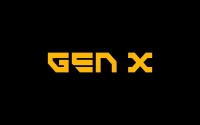Trump’s $2,000 Tariff Check Promise: The Math Just Doesn’t Add Up
There’s an old saying on Wall Street: if it sounds too good to be true, it probably is. This weekend, we were treated to a political masterclass in the principle. President Trump, in a Sunday post on Truth Social, declared that a "dividend of at least $2000 a person" would be paid to all but high-income Americans, funded by the "massive Tariff Income pouring into our Country."
It’s a powerful, simple pitch. You’re feeling the squeeze from inflation, and here’s a check with your name on it, paid for by foreign countries. It’s clean, direct, and politically potent. The only problem? When you run the numbers, the entire proposal collapses. This isn’t a serious economic plan. It’s a fiscal mirage.
Let’s set aside the politics and look at the ledger. My job for years was to dissect corporate proposals just like this one—to find the stress points where the story and the data diverge. And this is the part of the analysis that I find genuinely puzzling: the numbers aren’t just off by a little, they’re off by a staggering margin.
Deconstructing the Revenue Stream
The first rule of any distribution is to verify the source of funds. The administration claims the money will come from the more than $220 billion in tariff revenue it has collected. That’s the asset side of the balance sheet. But a significant portion of that asset is, to put it mildly, unstable.
Roughly $100 billion of that total revenue was collected via emergency powers that are currently under review by the Supreme Court. The court appears skeptical. If it rules against the administration, that money doesn’t belong to the Treasury; it belongs to the businesses that paid it. It would have to be returned.
I've analyzed hundreds of corporate filings, and earmarking legally contested revenue for a massive, non-refundable cash payout is a move I’ve never seen a CFO make. It’s fiscally reckless. It’s like a company promising a special dividend to shareholders based on the projected winnings of a lawsuit it hasn't even won yet. What happens if the court orders a refund after the checks have already been sent? The logistical and financial chaos would be immense.

So, the starting pool of funds isn't a firm $220 billion. It's, at best, a questionable $220 billion with a $100 billion potential clawback. At worst, it’s only $120 billion. This single variable introduces an enormous amount of risk into the equation before we even calculate the cost.
The Unsolvable Cost Equation
Now, let’s examine the liability side. The proposal is for a $2,000 check. In 2024, over 163 million Americans filed tax returns (a number that provides a solid baseline for potential recipients). A simple back-of-the-envelope calculation puts the total cost at approximately $326 billion.
The discrepancy is immediate and glaring. The administration has, at most, $220 billion in a fund to cover a $326 billion expense. That’s a shortfall of over $100 billion from the get-go.
Of course, the President mentioned excluding "high income people," but the details are conveniently absent. Let’s be generous and model this out. The Tax Foundation, a non-partisan think tank, ran an analysis using a hypothetical income cutoff of $100,000. Even with that exclusion, around 150 million adults would still qualify. The cost is about $300 billion—to be more exact, just shy of it, but still far exceeding the total available funds. You can’t close a $100 billion-plus gap by trimming a few high earners off the top.
The entire plan is like trying to pay for a new car with the change you found in the couch cushions, while also knowing that half of those coins might be counterfeit. It’s a fundamental mismatch of scale. To then suggest, as the President did in a follow-up post, that the leftover money will be used to pay down the national debt is moving from fiscal fantasy into absurdity. There is no leftover money. There’s a massive deficit.
It’s almost certain this can’t be done unilaterally. Congress holds the power of the purse, and past stimulus checks have required legislative approval. Getting this through would be a brutal fight. Fiscal conservatives in his own party would likely balk at what is effectively a massive stimulus package outside of a recession. Pumping $300 billion of consumer spending into an economy already wrestling with inflation is a recipe for a sugar rush followed by a crash. It could force the Federal Reserve’s hand, potentially leading to rate hikes that would hurt the very households this plan claims to help. Even the President’s own Treasury Secretary, Scott Bessent, was notably noncommittal, suggesting the $2,000 figure "could come in lots of forms." That’s the kind of careful language an executive uses when they know the math doesn't work.
A Proposal Built on Fiscal Quicksand
Let’s be clear. This isn’t a workable economic proposal. It is a political talking point, exceptionally well-designed to resonate with voters struggling with affordability. The numbers are not a minor implementation detail that can be ironed out later; they are the entire story. And they tell a story of impossibility. The revenue isn’t sufficient, the source of that revenue is legally contested, and the economic side effects could be counterproductive. This is a promise that cannot be kept with the funding mechanism that has been proposed. It's a check that can't be cashed.









